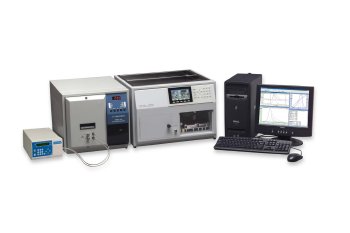Molecular weight and molecular weight distribution measurements are a basic necessity in studying the synthesis of the novel polymers being carried out by researchers at the Department of Bioengineering at the University of Pittsburgh.
For the Pittsburgh team, the applications and technical expertise provided by Malvern Panalytical is a significant factor in their use of the company's Viscotek gel permeation chromatography (GPC) system to characterize polymer molecular weight, prior to applying the Zetasizer Nano for zeta potential measurements to study inter-molecular interactions.
 Multidetector GPC system from Malvern Panalytical
Multidetector GPC system from Malvern Panalytical
Hunghao Chu, a graduate student in the Department of Bioengineering in Pitt's Swanson School of Engineering, synthesises new polymers to control the release of growth factors that regulate cell activity and body function. These novel molecular platforms are expected to have multiple applications in drug delivery.
"GPC is fundamental to our research," said Hunghao Chu. "We have to fully understand our new polymers and GPC delivers absolute molecular weight measurement. We also need to know the polydispersity index of our samples to understand polymer homogeneity. When publishing data in peer reviewed journals it is very important to have confidence in results and to be able to validate them."
"I am 100% satisfied with Malvern Panalytical' customer service," continued Hunghao Chu. "While many instruments on the market appear to provide similar standards of data, good customer service is a highly important distinction. Malvern Panalytical stands out in its provision of support beyond initial purchase. This means that we can be confident in the long term functionality of any system we buy from them."
The Viscotek line of instruments offers a complete, temperature controlled, advanced, multidetector GPC system suitable for all macromolecular applications, particularly research. The Zetasizer series measures particle and molecular size from below a nanometre to several microns, zeta potential, electrophoretic mobility, and molecular weight. In addition the system can be connected to a GPC system to enable it to be used as a chromatography detector.